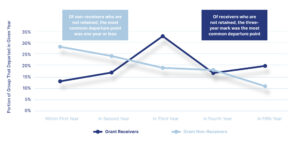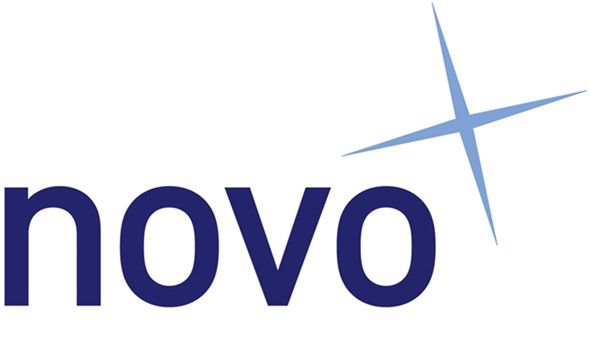Securing C-Suite Stability With Executive Retention Bonuses

Using retention bonuses to retain employees is a widely adopted practice – 60% of organisations have used them at some point, and 40% use them as standard practice during CEO turnover/succession. But how effective are they in securing long-term talent retention?
This article will examine how executive retention bonus agreements work, whether they’re a good investment, and how to leverage them to reduce employee turnover.
Understanding Executive Retention Bonuses
Retention bonuses, also known as ‘stay bonuses,’ are monetary incentives paid to employees beyond their regular salary to encourage them to stay with the organisation for a specified time. The employee may receive the bonus as a lump sum after the agreed-upon time ends or in installments throughout the retention period.
Retention bonuses typically range from 10-25% of the employee’s salary and are negotiated separately from the employment contract. A retention bonus example: If your CMO makes $352,000 a year, their yearly executive retention bonus at 10% would be $35,200.
Different Types Of Executive Bonuses
Retention bonuses are among the many offered as part of the total ‘executive compensation package.’ Other bonuses include:
- Signing Bonuses – Signing bonuses compensate for the risk of joining a new company. They’re typically given as ‘vested’ cash or equity for 1 year or more. The bonus is ‘vested’ so the executive doesn’t leave after getting it. If they do, the bonus is canceled, or they must pay it back if they’ve already received it.
- Golden Keys – the new company pays ‘Golden Keys’ to cover the loss of specific bonuses/vested equity the executive forfeited by leaving the old company. Usually, this is immediately paid on joining.
- Guaranteed Bonuses – Guaranteed bonuses are typically paid annually or bi-yearly to compensate the executive without raising the base pay above the historical level and to avoid raising income into another tax bracket
- Performance Bonus – Performance bonuses are tied to individual targets, such as those in sales, recruitment, product development, funding. Alternatively, they are tied to the company’s performance at the end of the fiscal or calendar year.
The distinctive feature of retention bonuses is that they are offered during an employee’s tenure, in contrast to other bonuses that are decided upon joining.
Situations Warranting Executive Retention Bonuses
Retention bonuses are naturally offered when the departure of a key leader could have a significant detrimental impact on the organisation. Common scenarios include:
- Mergers or Acquisitions:
Motivating executives to navigate uncertainties accompanying organisational changes.
- Organisational Restructuring:
Ensuring stability by locking the C-suite during CEO turnover/ succession-induced vision shifts.
- Key Enterprise Projects:
Retaining leaders essential for project completion.
- Hot Talent Market:
Preventing the loss of crucial team members to competitors, particularly in roles with a high turnover.
Are Executive Retention Packages Effective?
Retention bonuses emerge as an effective short-term strategy for talent retention during turbulence. A recent study shows that 40% of US companies deploy retention grants during CEO turnover and succession, resulting in a remarkable 50% reduction in turnover within the first year. In the second year, the difference is less pronounced.
The graph below illustrates the employee turnover post-CEO change. Those without retention bonuses exhibit higher turnover in the first year, contrasting sharply with those who receive bonuses, experiencing nearly half the turnover. Interestingly, the positive effect of bonuses wanes after the third year, leading to employee exits.

In Picture: The difference in employee turnover between bonus recipients and non-recipients post CEO change. Source: FW Cook
Though retention bonuses prove effective, they come with risks. They fail to enhance loyalty or engagement. You also risk signaling to the employee that you only need them till the retention period, after which they’ll start looking for other opportunities. You also risk making other employees feel unfairly compensated if word gets out.
Ultimately it comes down to a cost-benefit analysis. Replacing the same talent can cost 50%- 400% of their salary. So a 15% retention bonus is a considerable cost-saving. Note that this is the cost for a year’s retention. Employees typically leave after the retention period ends, and you’ll have to hire new talent again. But it will give you time for succession planning and training the new hires.
How to Effectively Deploy Executive Retention Bonuses
Weathering Short-Term Challenges
Retention grants prove useful in weathering short storms such as CEO succession, M&A and upcoming milestones. They are effective in retaining talent up to three years. In the study, 71% of the executives were retained throughout 80% of the retainment period. This suggests that setting a lengthier vesting period doesn’t retain executives longer. Post the second-year mark, there is an observable spike in executive turnover from 13% in the second year to 19% in the third year.
Boosting Morale During Turbulence:
During turbulent periods, employees bear the brunt of additional workloads, stress and instability. Bonuses serve to bolster employee morale and compensate for the increased work.
Employee Knowledge Transfer
They also help facilitate a smooth handover between departing & incoming employees, as the old employees can train new hires in their place.
What to Consider When Handing Them Out
Avoid Compensation Patching
Retention bonuses should not compensate for low salaries. If your salaries are below the industry average, increase base pay to sustain talent in the long run. According to a recent survey, 59% of employees believe that salary increases are the most effective way to retain top talent, while only 26% consider bonuses the primary mechanism.
Executive Retention Bonus Eligibility:
To qualify for a retention bonus, employees must have spent at least one year with the organisation and demonstrated commitment. Analyze performance reviews to understand an employee’s contribution.
Fair Guidelines and Communication:
A recent study by WorldatWork shows that a quarter of organisations rely on management discretion to decide who to offer bonuses and how much to offer. Relying on management discretion may lead to favoritism and affect morale if the word gets out. If you plan to use retention bonuses widely, communicate the program and its eligibility with all the employees. Employees may not like the program, but communicating directly can enhance trust and respect, rather than if word gets leaked. Having bonus recipients sign an NDA with their offer letter is not foolproof as these things have a way of getting out themselves.
Use Retention Agreements:
If your organisation can’t afford a bonus program, consider alternative perks like title changes, promotions, equity, and stock options. Use a holistic retention agreement to effectively secure executives without relying solely on financial incentives.
To sum it up, retention agreements are effective for short-term executive retention. However, they fall short in addressing long-term engagement and job satisfaction. Targeting the underlying issues using holistic executive retention strategies is critical for reducing turnover in the long run.
References:
https://worldatwork.org/resources/research/bonus-programs-and-practices#:~:text=Organizations%20typically%20have%20four%20types,to%20attract%20talent%2C%20and%20more
https://www.fwcook.com/Publications-Events/Research/Retaining-the-CSuite-After-CEO-Turnover/
https://www.shrm.org/topics-tools/news/talent-acquisition/real-costs-recruitment
https://www.gallup.com/workplace/247391/fixable-problem-costs-businesses-trillion.aspx












